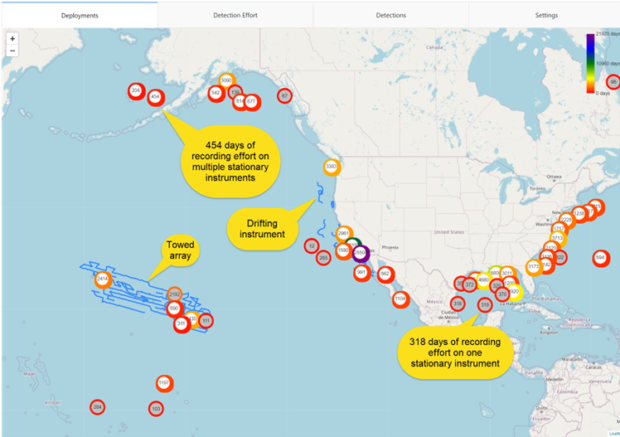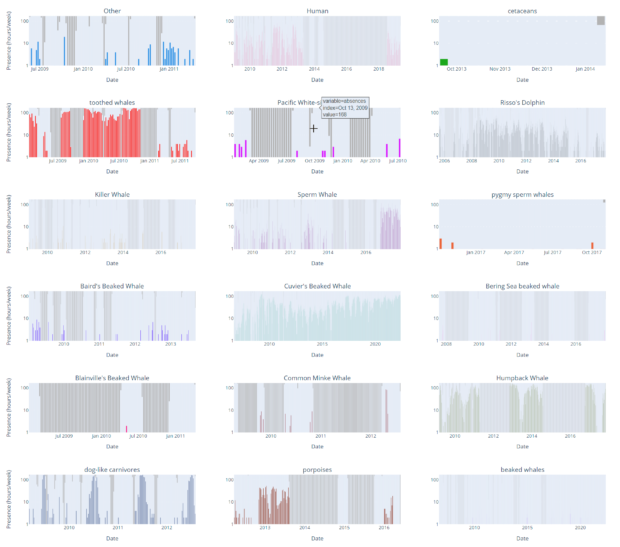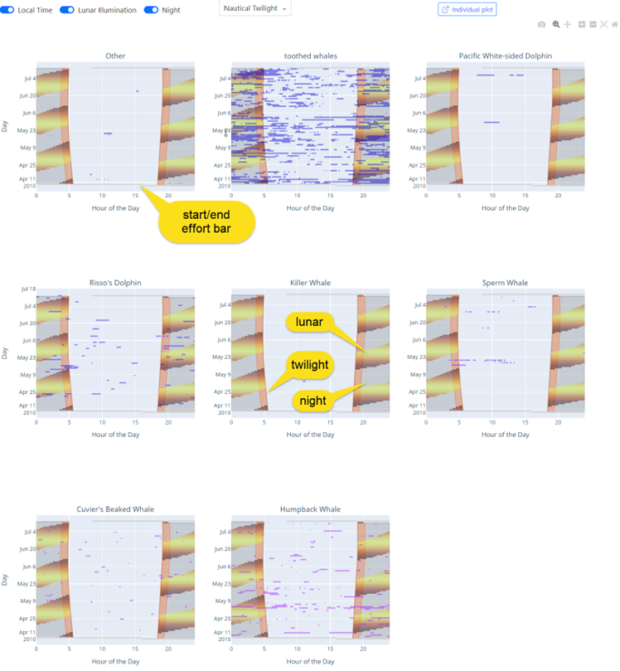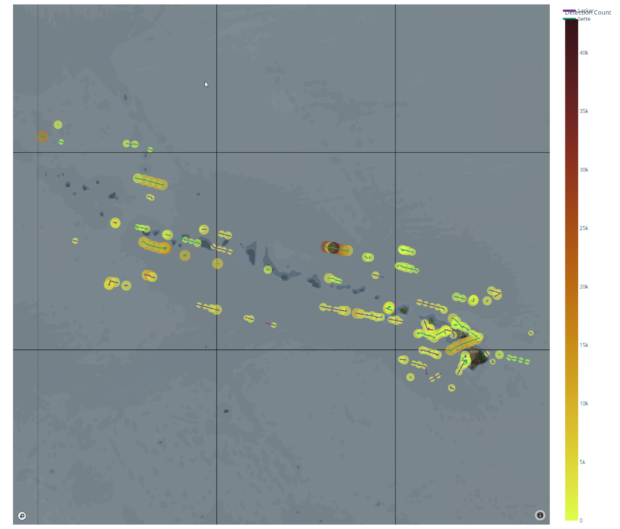Tethys 3 represents the latest evolution in the Tethys’s management of detection, classification, and localization information. Tethys 3 offers improvements in speed and accessibility. Due to major upgrades the in the underlying database, conversion steps need to be taken in order to migrate from Tethys 2 to Tethys 3. If you have an pre-Tethys 3 database that you wish migrated, please contact Professor Marie Roch.
Tethys 3 Highlights
Data Explorer
The Tethys Data Explorer is a web application interface for taking a high-level look at the data available on Tethys. Data Explorer provides maps of deployment locations and detection effort, plots of detections, and allows users to download figures and detections for further analysis. Using a point and click interface, Data Explorer permits rapid investigation of data without detailed knowledge about the data schemata used within Tethys.
Data Import
Importing data into Tethys can be accomplished in a number of ways. In addition to the existing Tethys 2 methods, a new data planning tool lets you open an example of the data that you wish to import in a web browser. You can then drag and drop from Tethys fields to your data. This establishes an “import” or “source” map that can then be used to add any data of the same format to Tethys.
Improvements to existing interfaces
Schemata (data layout) changes
We have implemented recommendations by the American National Standards Institute / Acoustical Society of America committee on Acoustic Metadata Standards for Passive Acoustic Monitoring. Existing Tethys Users: This requires some modifications to pre-Tethys 3 databases. Through 2024, we will help existing users migrate their data. Brief summary of changes
- Most data types (e.g, acoustic detections) now have an Id field that uniquely identifies records. In the past, several fields were sometimes needed to identify specific records. Records that refer to other types of records such as the deployment record associated with a set of detections have been updated to use the new fields in their reference.
- In several instances, case has been normalized or modified: e.g., SpeciesID -> SpeciesId, UserID -> UserId.
- Added quality assurance value enumeration: unverified, valid, invalid.
- Deployments: General description field added, GeometryType enumeration permits specifying whether the transducer (hydrophone/microphone) geometry is rigid or cabled. Depth is being replaced with elevation to support terrestrial applications. While depth is still supported, we recommend populating the elevation field whenever possible (use negative numbers for depth).
- Detections: For binned detections, the bin duration specifciation has been changed from BinSize_m to BinSize_min to conform with the International System of Units. Added the ability to note gaps in analysis. Note that analysis software provided by us will not currently consider these gaps when computing effort duration. Added support for soundscape measurements.
Server technology updates
- Improved performance: Server-side cacheing of queries and high-performance indices
- Expanded user feedback in error messages.
- New JSON-based query mechanism (under the hood improvement that helps software developers write queries more easily)
- Sunrise/sunset information is now computed locally and parallelized.
- and many others…
MATLAB changes
- Data retrieval functions frequently provide additional output arguments that provide data using MATLAB’s table format (similar to R and Pandas data frames).
- Query system revised to use the new JSON queries. The MATLAB interface are now data driven by the Tethys schemata and can adapt to schema changes without rewrites. For the most part, things will continue to work as in previous releases, but in some cases there are minor changes.
- More efficient plots.
- Added dbGetCalibration – Class for retrieving and interpolating calibration frequency responses.
Java changes
The Java library is rarely used by Tethys users. It serves as an under-the-hood interface between other languages such as MATLAB and R to the Tethys server.
- Added the ability to execute XPath queries against a string containing XML.
- Added Client.ping() to check if a Tethys server is currently active.
- Added ability to run JSON queries against Tethys. Includes options for stripping namespaces in returned XML.
- Added Client.removeDocument(collection, DocId) method to remove documents from the Tethys server.




